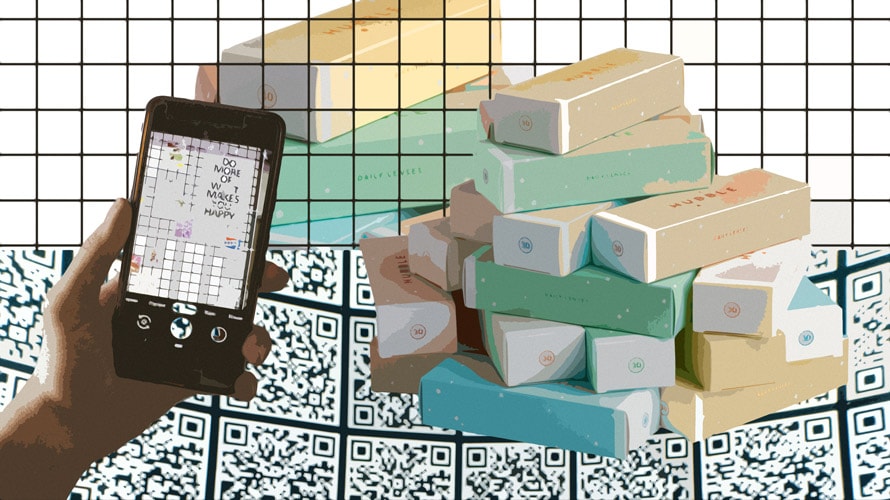Have you experienced connected packaging? If you haven’t you probably will some time soon. Product packaging has evolved from simply providing protection for the contained product as a means to convey some text information and maybe a bar-code. The Internet of Things (IoT) means that our product packages can potentially deliver a lot more value by providing digital instructions, product offers, coupons and more.
Table of Contents
Connected Packaging Defined
Connected packaging refers to the integration of various technologies within product packaging design in order to drive various outcomes including enhanced user-experience, increased product engagement and a greater level of consumer behaviour analysis. Connected packaging is considered to be a form of ‘smart packaging’.
Types of Smart Packaging
There are three key types of high-tech smart or connected packaging:
Active Packaging
Active packaging is the simplest form of connected packaging as it doesn’t use special substrates or expensive technologies. It simply uses special symbols, QR codes or advanced barcode systems like Digimarc Barcode, enabling customers to interact with the packaging to derive additional product information and possibly exclusive brand content. A good example of active packaging is the presentation of QR codes which take the consumer to a company’s Facebook page.
Interactive Packaging
Interactive packaging invites interaction. It can involve the use of specialist, technologically advanced materials that are capable of communicating information. Such as meat packaging that has a freshness indicator and battery packaging that indicates the state of the battery charge. Other examples of interactive packaging include sandwich boxes that fold out to become paper plates and clothing boxes that can be refolded to become clothes hangers.
Intelligent Packaging
Intelligent packaging uses inbuilt two-way communications technologies such as radio-frequency identification (RFID) and near field communication (NFC) to both send and receive information. This form of packaging is costly but clearly adds a lot of potential value. RFID can potentially eliminate traditional in store checkout processes as products can be scanned without the need for barcodes.
Connected Packaging Examples
Here are just a few interesting, real world examples of connected packaging and what it delivered.
Diageo Limited Edition Johnnie Walker Blue Label
In their recently launched limited edition Johnnie Walker Blue Label ‘smart bottle’ Diageo incorporated a NFC tag. NFC is considered to be a more appealing alternative to QR codes as it is much easier to simply wave a smartphone close to the package than it is to scan a code.
The Johnnie Walker Blue Label ‘smart bottle’ recognised when it was opened and was able to share this information with a smartphone app. Diageo used this to gather data about when and where the drink was consumed while customers were provided with cocktail recipes, targeted offers and brand updates.
G.H.Mumm Intelligent Champagne Bottle
Launched on the eve of the Monaco Grand Prix in Monte Carlo, luxury brand G.H.Mumm developed an ‘intelligent’ champagne bottle that included an RFID device. When the cork was popped, the device was triggered by a sensor in the cork and was connected to the lighting and sound system in the private club. This automatically centred attention on the table opening the fresh Magnum of champagne, immediately enhancing the social experience and the association between the luxury brand and F1 motor racing.
McDonalds Australia “Track my Macca”
McDonalds had noted that consumers didn’t understand where their food originated and this was having an impact on their market. To address this they created an immersive App experience that enabled their customers to determine the origin of what they were eating. Customers simply waved their smartphones at their packaging and the App launched an augmented reality world entirely based on the McDonalds’ products they’d purchased. The App used GPS along with image recognition and presented customers with useful insights from local farmers and suppliers.
Summary
The future of packaging is definitely connected. The potential that various forms of connected packaging provides to both producers and consumers is enormous and we’ve only begun to see what it can do.

